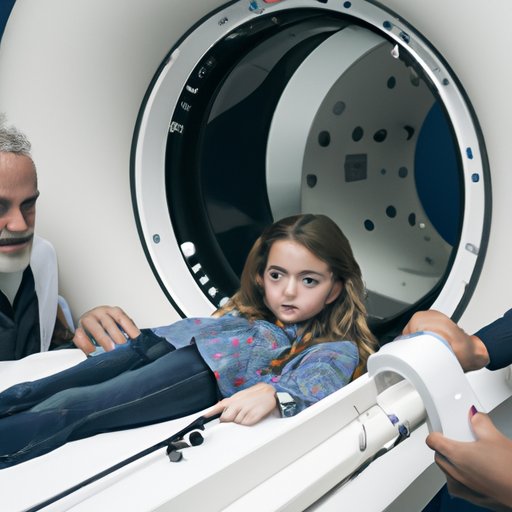Introduction
Magnetic resonance imaging (MRI) is a diagnostic technique used to produce detailed images of the body’s internal organs, bones, and soft tissues. An MRI scan uses a powerful combination of magnetic fields and radio waves to create highly precise images of the body that can be viewed on a computer monitor. By providing detailed insight into the inner workings of the human body, MRI scans are invaluable tools for diagnosing diseases, detecting tumors, and monitoring treatment progress.

Exploring the Science Behind MRI Technology
At the heart of MRI technology is the physics of nuclear magnetic resonance (NMR). According to the National Institute of Health (NIH), “NMR is based on the behavior of atomic nuclei when placed in a static magnetic field and exposed to a second oscillating magnetic field at a specific frequency.” In other words, when exposed to a strong magnetic field, the protons in the body’s hydrogen atoms align themselves with the direction of the magnetic field. When a second, weaker magnetic field is then applied, the hydrogen atoms respond by producing a weak radio signal that can be detected and measured by the MRI machine.
This process is repeated multiple times as the MRI machine scans different parts of the body. The resulting signals are converted into detailed images of the body’s anatomy that can reveal information about the structure and function of its organs, bones, and other tissues.

A Comprehensive Guide to MRI Procedures
An MRI scan typically takes between 30 minutes and 2 hours to complete, depending on the type of scan being performed. Before the scan begins, the patient is asked to remove any metal objects such as jewelry or eyeglasses that could interfere with the magnetic field. The patient is then placed on a sliding table and positioned inside the MRI machine, which consists of a large circular magnet and a movable platform for the table.
The scanning process itself involves the use of powerful magnets to generate radio waves that pass through the body. As the radio waves interact with the body’s hydrogen atoms, they cause the atoms to emit faint signals that are picked up by the MRI machine and translated into images. The entire process is painless and non-invasive.
After the scan is completed, the patient is free to leave the facility. The images taken during the scan are then analyzed by a radiologist, who will look for any signs of abnormality or disease.
The Benefits and Risks of Magnetic Resonance Imaging Scans
MRI scans offer many advantages over other imaging techniques such as X-rays or CT scans. Because they provide such detailed images of the body, they can detect even subtle changes in the body’s tissues and organs that might otherwise go unnoticed. They can also detect abnormalities that may be missed by other imaging techniques.
However, there are some risks associated with MRI scans. The strong magnetic fields used in the scanning process can cause a reaction in some people, such as dizziness or nausea. Additionally, the loud noises produced by the MRI machine can cause discomfort or anxiety in some patients.
Conclusion
Magnetic resonance imaging (MRI) scans are an invaluable tool for diagnosing diseases, detecting tumors, and monitoring treatment progress. By using a combination of powerful magnets and radio waves, MRI machines create detailed images of the body’s internal organs, bones, and soft tissues that can reveal information about their structure and function. Although there are some risks associated with MRI scans, the potential benefits far outweigh them.
In conclusion, MRI is an important and effective diagnostic tool that can provide valuable insights into the inner workings of the body. With proper preparation and careful monitoring, MRI scans can help doctors make informed decisions about the best course of action for their patients.
(Note: Is this article not meeting your expectations? Do you have knowledge or insights to share? Unlock new opportunities and expand your reach by joining our authors team. Click Registration to join us and share your expertise with our readers.)
